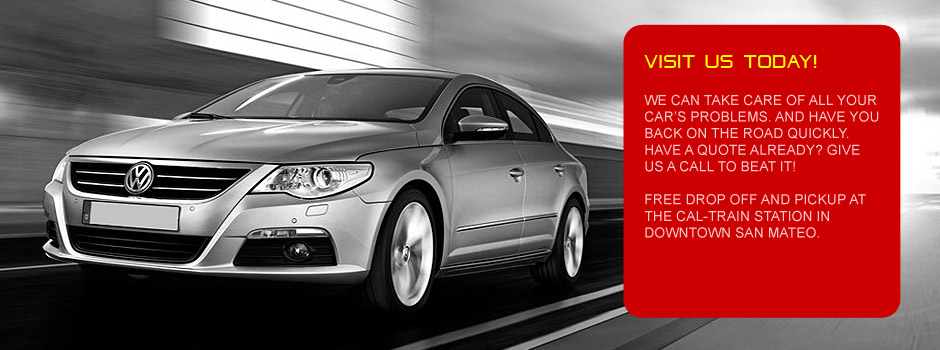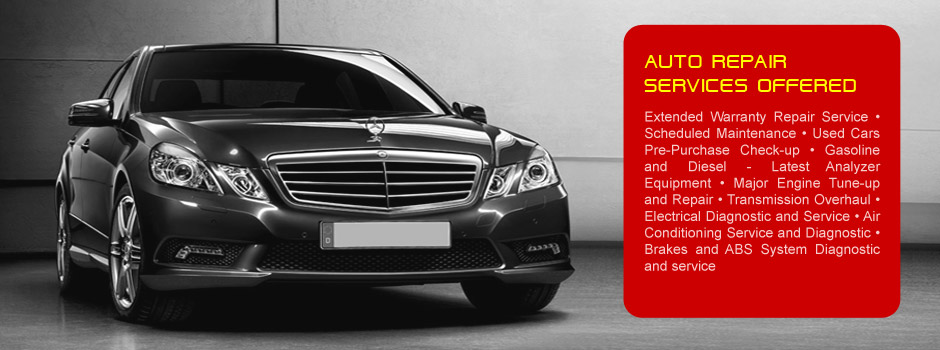- Home
- Services
- Maintenance
- BMW
- Audi
- Mercedes Benz
- Porsche
- Noise Problems
- Service Specials
- About
- Links
- Contact
Automotive City
San Mateo City Auto Repair. Import Car Specialist.
308 7th Avenue, San Mateo, CA 94401
(650) 458.6270




Porsche

Porsche Maintenance
"A Porsche belong on the road, not in the workshop..."
Porsche sports cars stand out thanks to their long maintenance intervals and short workshop visits. Let Automotive City trained mechanics put their expertise to work on restoring your Porsche to peak performance.
The following maintenance schedule is based primarily on the recommendations from the Porsche Maintenance and General Repairs Manual. However, where noted, we have provided some additional recommendations and in some cases more stringent recommendations than those required by Porsche.
Required Every 7500 miles
- Change Engine Oil and Filter (Turbo Engines Only)
- While Porsche recommends a 7500 mile oil change interval for Turbos and a 15000 mile oil change interval for normally aspirated cars, we feel that shorter oil change intervals are important to the longevity of the engine (bearings, rings, valve train). Personally, I change the oil and filter every 3000 miles (4800 km) and highly recommend that you choose an interval no longer than 5000 miles (8000 km). You should only use a Mahle oil filter with check valve or a Porsche OEM filter.
Required Every 15000 miles
- Change Engine Oil and Filter
- Engine: Visual inspection for leaks.
- Cooling and Heating System: Check for leaks.
- Coolant Hoses: Check condition and tighten connections.
- Radiator: Visual inspection for external fouling.
- Coolant (antifreeze): Check level and antifreeze content.
- Crankcase Ventilation: Check tightness of hose connections.
- Intake Air: Check hoses, lines, and connections for tightness.
- Brake Pedal: Check play of brake pedal and adjust if necessary.
- Brake Hoses and Lines: Visual Inspection for leaks, damage, and corrosion.
- Check brake fluid level and top off if necessary.
- Brake System: Visual inspection of brake pads and discs to check for wear.
- Clutch: Check play and adjust if necessary.
- Clutch Plate: Check for wear.
- Hydraulic Clutch Actuator: Visual inspection for leaks.
- Steering Gear: Check screw connections for tightness. Visual inspection of the bellows for damage.
- Tie Rod Links: Check play, tightness, and dust caps.
- Power Assisted Steering: Visual inspection for leaks, check fluid level and top off if necessary.
- Ball Joints: Visual inspection of dust caps for damage.
- Wishbone: Check screw connections for tightness.
- Front Wheel Bearings: Check play and adjust if necessary.
- Rear Wheel Bearings: Check play and adjust if necessary.
- Lubricate clutch release lever and secondary spring.
- Manual Transmission: Visual Inspection for leaks, check oil level, and top off if necessary.
- Automatic Transmission: Check fluid level and top off if necessary.
- Drive Shafts: Visual inspection of sleeves for leaks and damage.
- Exhaust System: Visual inspection of the exhaust system for leaks and damage. Check screw connections for tightness and attachment.
- Tires: Check condition and correct tire pressure.
- Door Arrester (latch mechanism): Check operation and lubricate.
- Door Hinges: Lubricate.
- Check Door , Engine Hood locks and safety hooks on front hood for tightness and function.
- Seals for doors, hood, and roof: Remove abraded rubber, apply suitable agent to seals.
- Check Operation of vehicle lighting.
- All headlights: Check setting and adjust if necessary.
- Horn: Check operation.
- Retractable Headlights: Lubricate rods.
- Throttle Actuator: Check for smooth running.
- Windshield Washer System: Check function, check fluid level, and nozzle setting and adjust if necessary.
- Headlight Washer: Check operation, fluid level, and nozzle setting and adjust if necessary.
- Battery: Check fluid level and top off if necessary.
- Check operation of all electrical control equipment and optional extras.
- Heater, ventilation, and air conditioner blower: check operation.
Required Every 30000 miles
- Change Engine Oil and Filter
- Check tension and condition of timing (and balance shaft) drive belts.
- Check tension and condition of V-Belt (Power Steering) and Poly-Rib Belt (AC / Alternator)
- Replace Spark Plugs (At least every two years)
- Replace Air Filter
- Automatic Transmission: Change ATF, clean ATF strainer.
Required Every 60000 miles
- Manual Transmission: Change Oil
- Automatic Transmission: Change Oil in Differential
Other Required Maintenance
- Brake Fluid and Engine Coolant should be replaced every two years regardless of mileage. If the car is tracked, the brake fluid should be changed at least once a year. However, in some PCA regions, to pass a DE Event Tech Inspection, you must provide proof that your brake fluid has been changed within 3 months of the event.
- On 944s, the timing belt and balance shaft belt should be changed at 45,000 miles. For 968s, they should be changed at 60,000 miles. For both the 944 and 968, the belt condition and tension should be checked every 15000 miles. The 15,000 mile inspection interval assumes that the car has bee driven on a regular basis. If your timing belt is two years old and you have not reached the 15000 mile inspection interval, the timing belt tension and condition should be checked then and once per year after that.
- For 944s it is unusual for a water pump to last significantly past 100000 miles. For that reason, we recommend replacing the water pump at every other belt change (90000 miles). For 968s, it may be possible to extend the life of the pump to the second belt change at 120000 miles. However, you should monitor for indications of a failing water pump closely after 100000 miles.
- For timing belt and balance belt tensioners and rollers, we recommend removing the rollers and spinning by hand at each timing belt replacement. If the roller is noisy, it should be replaced. All rollers should be replaced at every other belt change unless it's an individual roller that was replaced during the previous belt change. For pre-1987 model 944s, the timing belt tension roller stud should be replaced at every other belt change.
